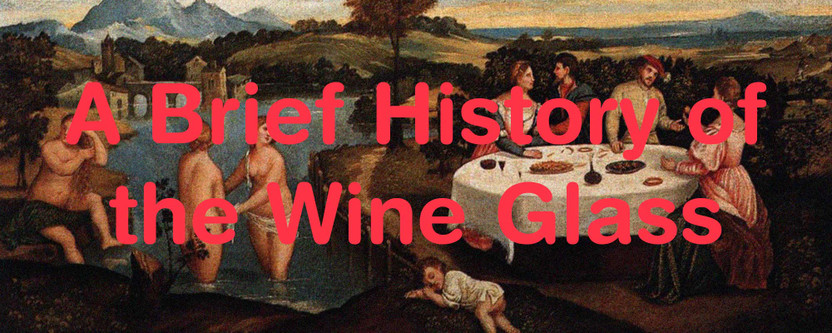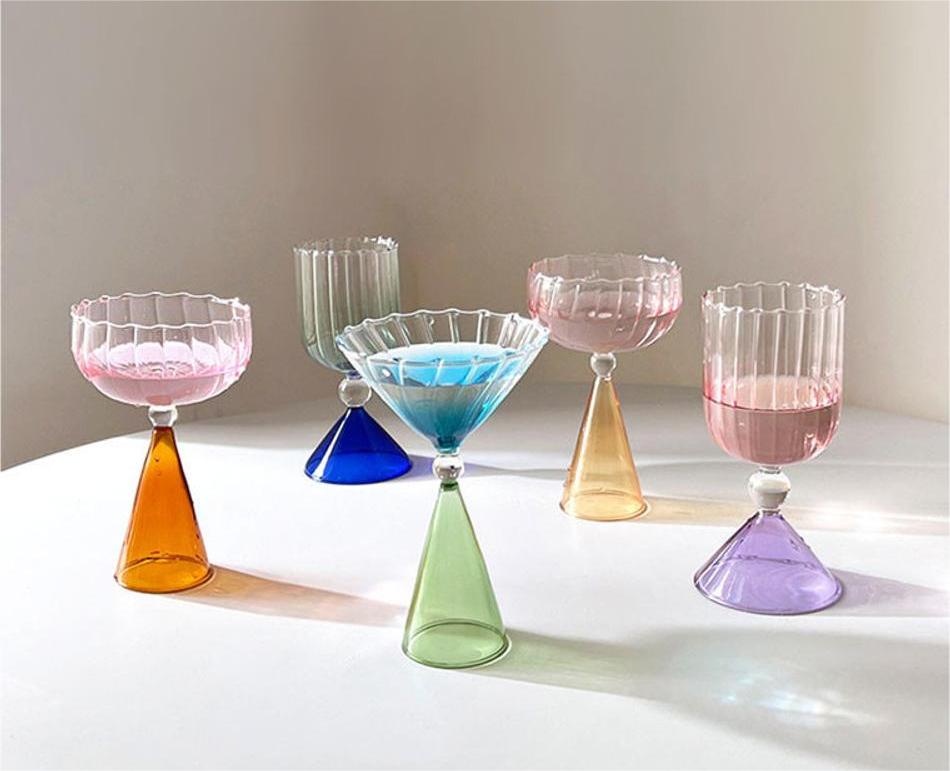A Brief History of the Wine Glass
Posted by TUTU HOME on 5th Jan 2024
Brief Wine Glass Chronicles: Unraveling the Fascinating History of Drinkware
“The history of the wine glass is a captivating tale that spans across ages, from the humble beginnings of various drinking vessels to the exquisite glass designs we cherish today.”
So, when was glass first used as a drinking vessel?
The history of the wine glass is a fascinating journey through time, evolving from various materials and vessels to the elegant glass design we recognize today. Its story is shaped by technological advances, historical influences, and the human desire for beauty and refinement.
Early History of Drinking Vessels
Long before the invention of wine glasses, people relished their wine using a fascinating array of vessels. From baked clay goblets to animal horns and leather drinking vessels, each had its unique charm and cultural significance. Over the centuries, these vessels included baked clay goblets, timber and bronze tankards, pottery goblets, animal horns, and the leather drinking vessel known as a 'blackjack.' However, one material would become synonymous with wine drinking for ages to come: glass
.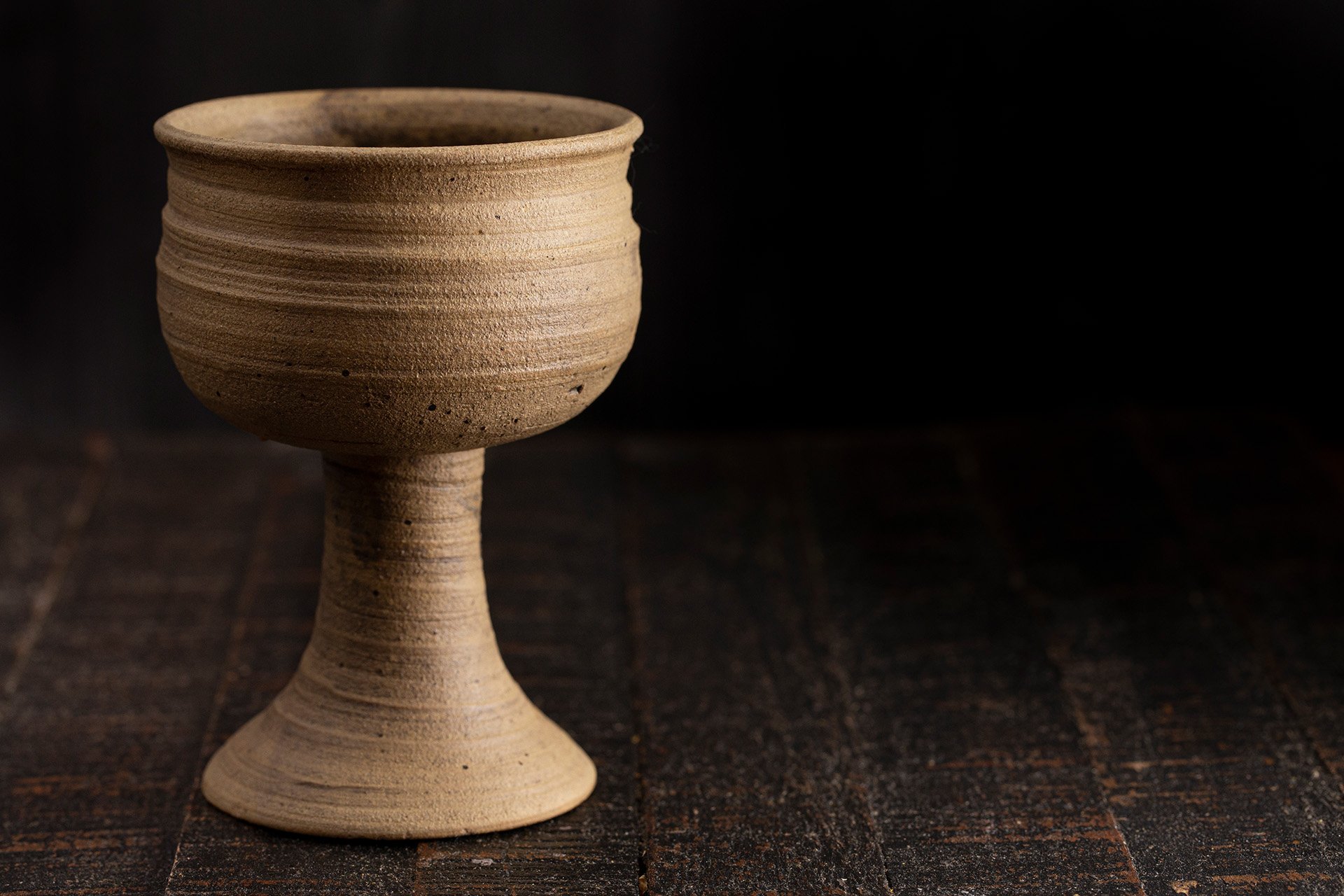
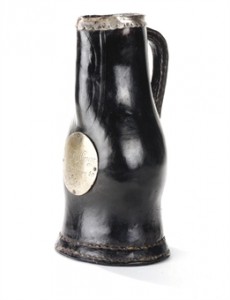
Picture left: A clay globlet.
Picture right: A Charles II Silver-Mounted Leather Blackjack Jug Unmarked, Circa 1682.
Emergence of Glass and Glass Blowing
Glass is one of the oldest manufactured materials in the world. The journey of the wine glass began with the discovery of glass-making material - Obsidian, a volcanic glass used initially for hunting tools. Over time, the art of glassmaking spread across regions. The first objects entirely made from glass originated in Mesopotamia around 2000 BCE. These sculptured vessels, used for oils and cosmetics, were the earliest instances of glass being shaped into functional and beautiful objects. The art of glassmaking gradually spread from Mesopotamia to other regions of the world, and around 1 CE, the Babylonian region introduced a significant technological advancement: glass blowing. This innovation revolutionized glass production, allowing for a wider range of shapes and designs.
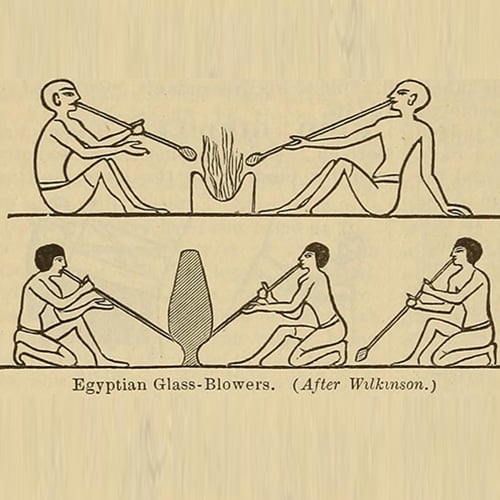
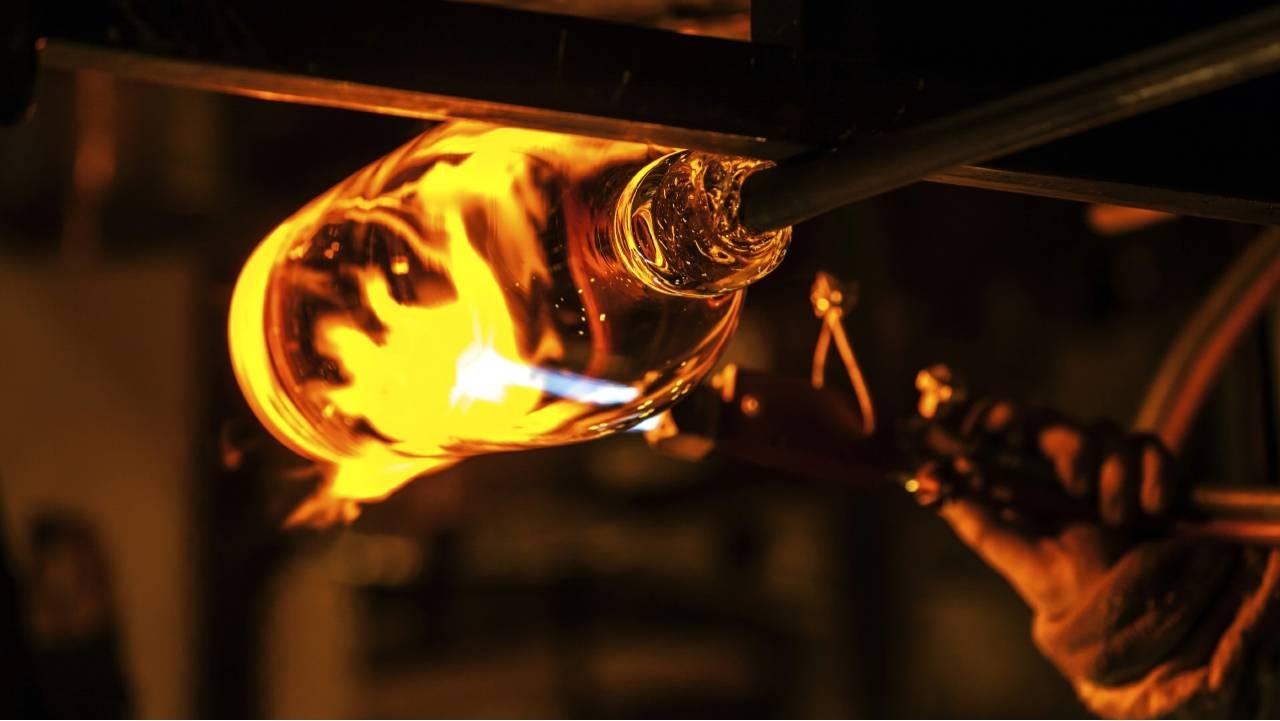
The Ancient Origins of Glass Blowing Modern Glass Blowing
European Renaissance and Iconic Wine Glass Shape
The 14th century marked a pivotal moment in the history of the wine glass, as Europe became the center of glass production. It was during this time that the iconic shape of the wine glass, with its distinct bowl, stem, and base, first appeared in the city of Venice. Although glass vessels had been used for drinking since ancient times, this new design represented a medieval touch of elegance.
Contribution of Angelo Barovier
Angelo Barovier, an Italian artist and scientist of the 15th century, left an indelible mark on the evolution of glass. His invention of clear glass, known as Cristallo, elevated the aesthetic appeal of glassware and set a new standard of purity and refinement. Barovier's technique, called Venetian crystal or crystal glass, granted him exclusive rights to the production of this transparent marvel.
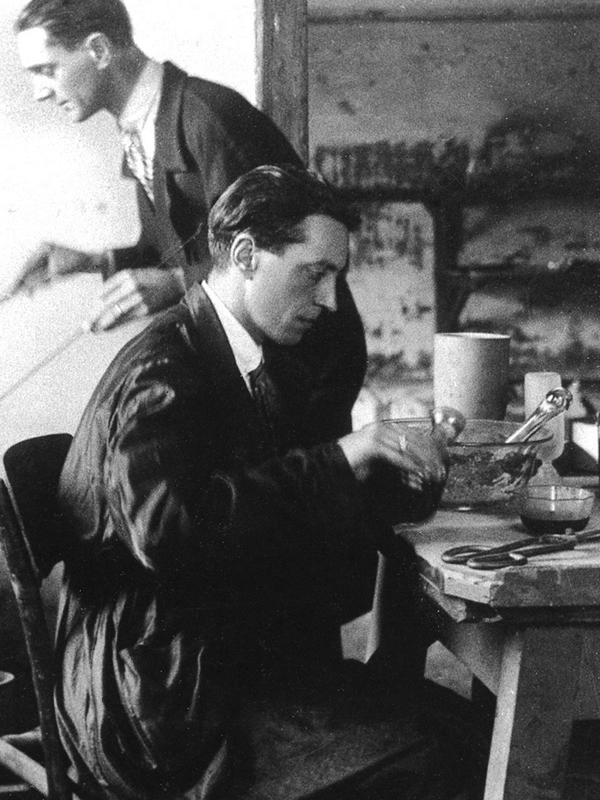
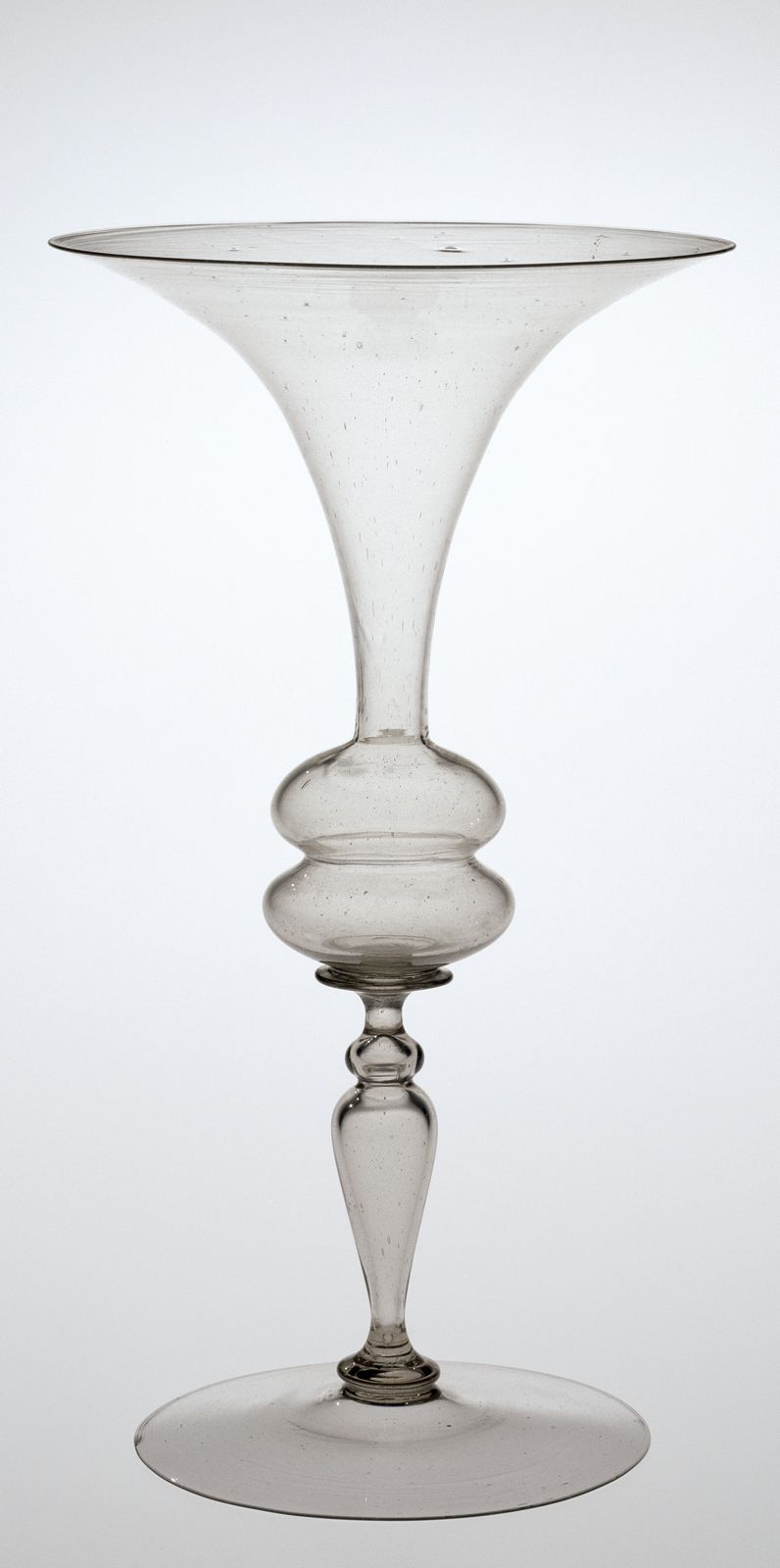
Cristallo Wineglass, 1575-1625.Collection of The Corning Museum of Glass (2000.3.11)
Glass in Art and Literature
The allure of glassware extended beyond practicality, finding its place in renowned works of art and literature. As the centuries progressed, glassmakers continued to refine their craft, and glassware became an increasingly common sight in visual art. In 1540, "The Bathers" by Bonifacio Veronese and Vermeer's "The Wine Glass" in 1660 immortalized clear glass vessels, depicting their cultural significance and timeless beauty.
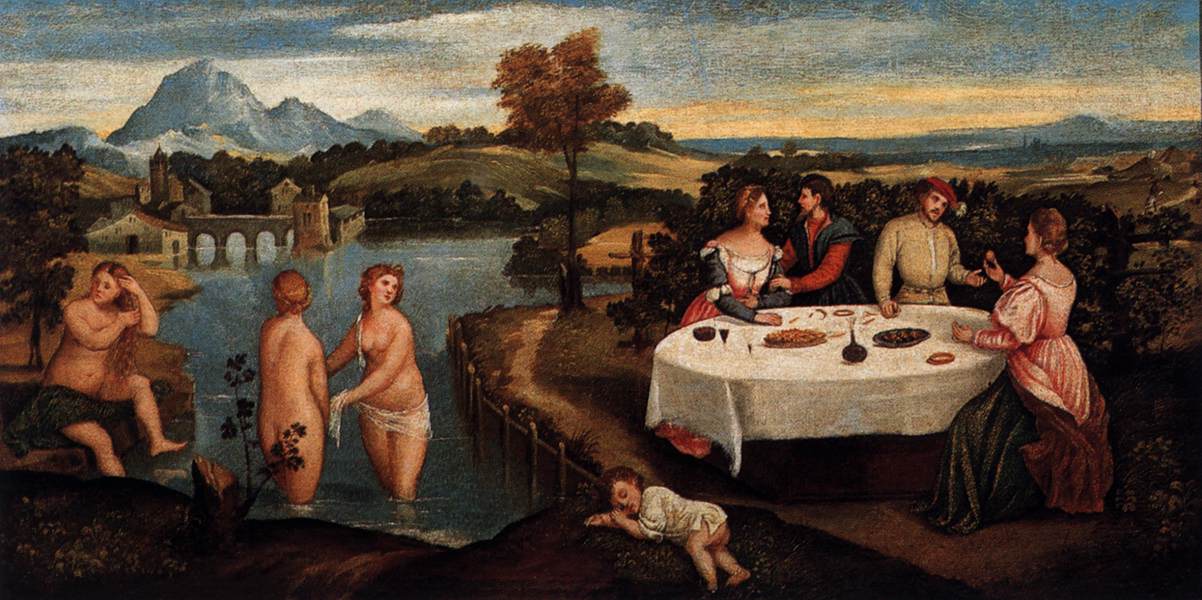
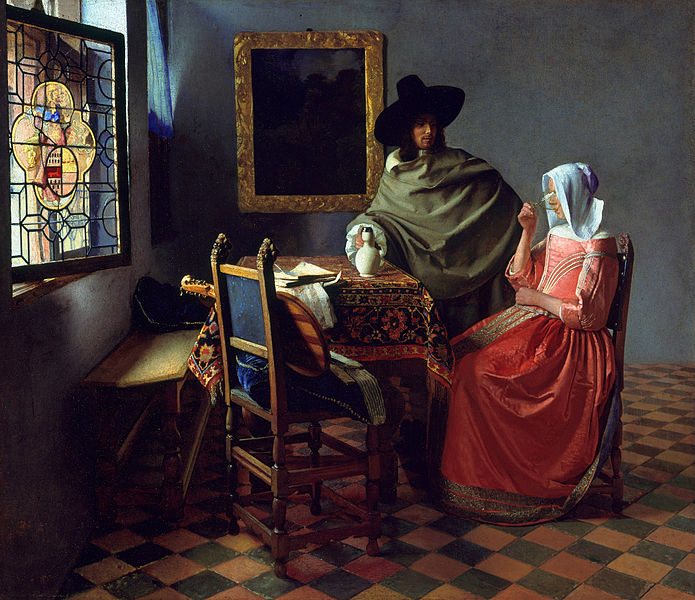
"The Bathers" by Bonifacio Veronese --1540 Vermeer's "The Wine Glass" -- 1660
However, the history of glass as a drinking vessel goes back even further. Pliny the Elder, in his book "Naturalis Historia" in 79 CE, made the earliest recorded mention of glass being used as a drinking vessel. He praised the material's pliability and mused about the highest value placed on colourless, transparent glass akin to crystal. Interestingly, even in 79 CE, over 1500 years before clear glass was invented, the concept of crystal-like glass already existed in people's consciousness through natural occurrences and experimentation.
Wine Glass Transformation and Toast Master
With wine gradually making its way to the table during the early 1700s, the role of the wine glass transformed. Initially, it resembled a shot glass, and nobility would have their glasses handed to them by footmen or valets, who would quickly refill the glass after being gulped down. Eventually, the wine bottle made its way to the table, allowing individuals to pour their wine and enjoy it at a more leisurely pace.

The migration of wine to the table heralded a re-emergence of the classic bowl, stem, and base design. This new form of wine glass not only added elegance with tall, slim stems, twists, and decorative knobs but also served practical purposes, such as maintaining the wine at the optimal temperature. The warmth of the hand around the bowl was found to affect the wine's flavor, leading to the use of long stems for white wine and shorter stems for red wine.
During this period, the role of the Toast Master became crucial in keeping events lively and enjoyable for guests. It was customary for the Toast Master to empty their glass after each toast and remain standing until all toasts were completed. To aid in this role, special glasses with thicker walls and bases, almost solid glasses, were developed to ensure smooth and joyous celebrations. This marked the beginning of designing different drinking glasses for different drinks.
Modern-Day Wine Glass Usage
Today, we continue to follow the tradition of using various glass styles to accentuate the characteristics of different wines. White wines are typically served in glasses with smaller bowls to preserve floral aromas and maintain cooler temperatures. In contrast, red wines are best served in glasses with larger bowls, allowing for better aeration and evaporation of ethanol, which results in a smoother flavor. A full-bodied white with similarities to red wines might be served in a medium-sized glass, while champagne finds its best match in tall, narrow flutes.
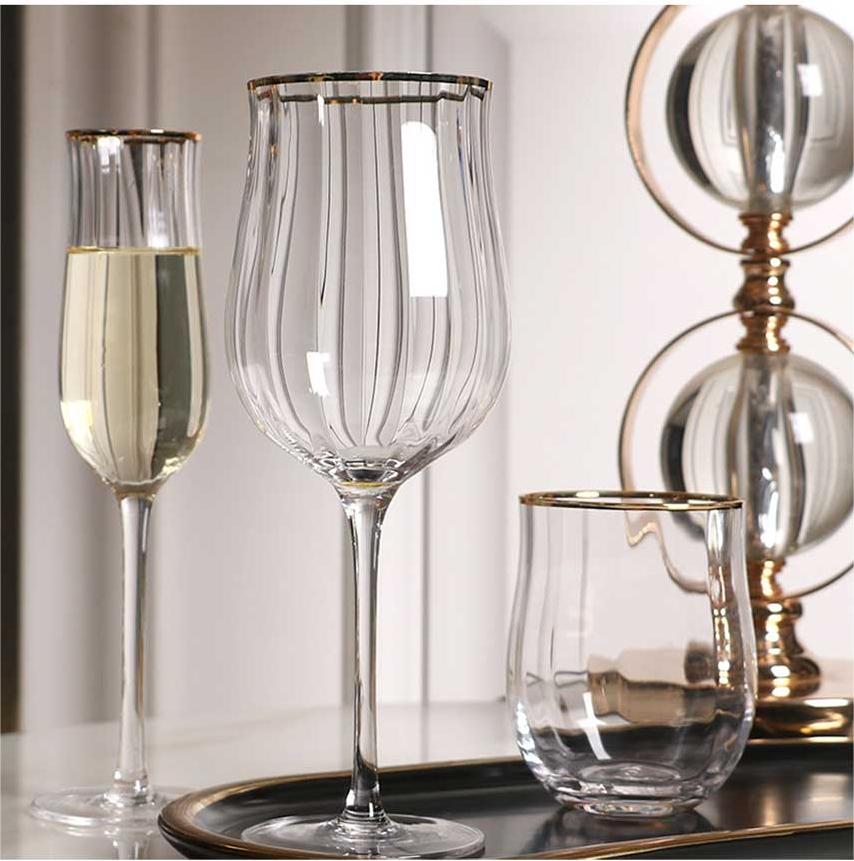
Throughout history, the wine glass has played a significant role in art, culture, and traditions. From Pliny's appreciation of glass as a superior material in 79 CE to Angelo Barovier's invention of clear glass and its continued influence on contemporary wine culture, wine glassware remains an enduring symbol of elegance and celebration. As new discoveries and trends emerge, the drinking wine glasses continue to adapt, making their journey through history as fashionable and relevant as ever.
The pleasure of using the right wine glass, the feel of quality in one's hand, and the clinking sound of toasts all contribute to the enduring allure of the wine glass.

